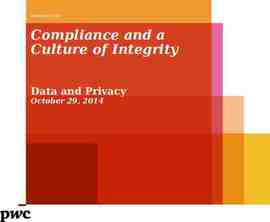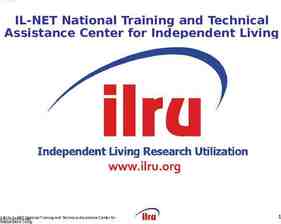Elder Abuse October 20, 2014 Dana Billock Dale Hamilton Dawn Lampman
66 Slides2.98 MB

Elder Abuse October 20, 2014 Dana Billock Dale Hamilton Dawn Lampman

Elder Abuse - Testimonial Testimony of Marie-Therese Connelly before the Senate Special Committee on Aging

Elder Abuse - Statistics For every case of elder abuse about five more go unreported. Estimated 5 million financial abuse victims each year. Between 1 and 2 million Americans age 65 have been injured, exploited, or mistreated.

http://www.youtube.com/watch?v -eaJXBj87to

Elder Abuse: Definition “Elder abuse is a term referring to any knowing, intentional, or negligent act by a caregiver or any other person that causes harm or a serious risk of harm to a vulnerable adult” – Administration on Aging (AoA)

Elder Abuse: Types Physical Abuse Emotional Abuse Sexual Abuse Abandonment Neglect Violation of rights Medical Self-neglect* Financial/Material NCEA, 2009; Hooyman & Kiyak, 2009

Elder Abuse: Reasons for Caregiver Stress Dependency or impairment of the older person External Stress Intergenerational transmission of violence Personal Problems

Case Study The case of SR; an example of multiple occurrences of elder abuse.

Case Study SR is an 86 year old patient who was brought to the emergency department with reports of a inability to walk. Her husband, a retired army veteran, passed away 5 years ago. His social security check, as well as hers, provides her income for the month, which is sufficient for her needs. Her adult daughter, son-in-law, and two grand children ages 12 and 15, moved in to help take care of her and the house after her husband passed. SR’s daughter states that about a week ago, SR was in good health, able to walk, and have coherent conversations with family members and then she got sick.

Case Study Upon examination, SR was diagnosed with late stage dementia. She was also severely underweight, dehydrated, had severe bilateral hamstring contractures, stage 4 decubitus ulcer on her sacrum and lower back, as well as human fecal matter under her fingernails. SR is unable to stand or walk, and remains laying on her right side in the fetal position.

Neglect

Elder Abuse: Neglect Refusal or failure to fulfill any part of a person’s obligations to an elder. Also include withholding food, medication, funds, or medical care. – Hooyman & Kiyak, 2009

Elder Abuse: Neglect 1/10 older adults experience neglect each year (Hoover & Polson, 2014). Significantly under diagnosed and underreported (Lachs, 2010). Doctors don’t usually screen for abuse due to reimbursement issues and fear of getting involved with the legal system (Lachs, 2010)

Physical Signs of Neglect Depression Malnourishment/weight loss Decubitus Dehydration Poor hygiene & grooming Needed medical and/or dental care Lachs, 2010

Case Study: Neglect SR had been diagnosed with dementia prior, but had not been taking her medications as prescribed. A review of her medications found unopened bottles that were close to the expiration dates. Her most recent doctor’s visit was over 4 years ago. SR had been laying in bed for at least two years, most of which she spent on her back. This caused the decubitus ulcer on her back.

Case Study: Neglect SR had gone weeks, possibly months, without bathing. Due to her inability to move and/or care for herself, she defecated on herself. This is how fecal matter ended up under her fingernails. Physical therapy was ordered to help to restore SR’s mobility. The physical therapist noted that the magnitude of the contractures were not consistent with the daughter’s reports of SR walking up to one week before getting sick.

Financial Abuse

Elder Abuse: Financial Theft; misuse or concealment of the elder’s funds, property, or estate. Also include telemarketing fraud, investment schemes, high rates for home loans, home repair scams. – Hooyman & Kiyak, 2009

Elder Abuse: Financial Often accompanies other forms of abuse. Mostly neglect or physical (National Institute of Justice). Reported to be greater among various minority populations (Hafemeister, 2003) Can be more difficult to detect and establish (Hafemeister, 2003)

Signs of Financial Abuse Decrease in bank account balances Sudden change in bank practices Problems paying bills/other necessities Lack of money even although receiving disability or social security check Hafemeister, 2003

Case Study: Financial The attending physician suggested placing SR in a skilled nursing facility (SNF) to receive rehab. SR’s daughter was resistant to decision of sending her to rehab stating, “we have to get her social security check.” Research regarding financial abuse of the elderly is sparse and receives less attention than other forms of elder abuse Hafemeister, 2003

Case Study: Conclusion The attending physician admitted SR to the hospital for a mandatory 72 hours stay in order to qualify for placement in a nursing facility, removing her from the home.

Physical Abuse

Physical Abuse “Non-accidental use of force against an elderly person that results in physical pain, injury, or impairment. Such abuse includes not only physical assaults such as hitting or shoving but the inappropriate use of drugs, restraints, or confinement.” 1.6 million older Americans are physically abused annually National Committee for the Prevention of Elder Abuse

Where does it happen? Higher rates reported in institutional settings A 1989 study of 577 nurses and nurses’ aides from 32 nursing homes revealed that 21% had observed excessive use of restraints, 17% observed pushing, grabbing, shoving, or pinching, and 12% observed slapping and hitting of elderly residents. Older adult’s homes Lynn et al. 2013

Who are the perpetrators? Acquaintances, sons, daughters, grandchildren, or others Likely to be unmarried, live with their victims, and to be unemployed Alcohol or substance abuse problems Caregivers National Committee for the Prevention of Elder Abuse

Physical Indicators Sprains, dislocations, fractures, or broken bones Burns from cigarettes, appliances, or hot water Internal injuries evidenced by pain, difficulty with normal functioning of organs, and bleeding from body orifices Bruises National Committee for the Prevention of Elder Abuse

Behavioral Indicators Injuries are unexplained or explanations do not "fit" with the injuries observed Family members provide different explanations of how injuries were sustained A history of similar injuries, and/or numerous or suspicious hospitalizations Delay between onset of injury and seeking medical care National Committee for the Prevention of Elder Abuse

Bruising Older adults tend to be frequent visitors to the doctor’s office. Age related changes may mask markers of abuse, i.e. bruising. Medications may play a role. Ex. Anticoagulants (warfarin) Wiglesworth et al. 2009

Bruising 90% of accidental bruises are on the extremities Bruises on elders who have been physically abused tend to be: 5cm in width Located on head, neck, lateral right arm, and posterior torso Wiglesworth et al. 2009

Implications

Impact on Victim Consequences of abuse can be especially serious because: Older people are physically weaker and more vulnerable than younger adults. Many older people survive on limited incomes, so the loss of even a small sum of money can have a significant impact. Older adults may be isolated, lonely or troubled by illness, making them more vulnerable as targets.

Impact on Victim Consequences of abuse can be especially serious because: Stressful life events have detrimental effects on physical and mental health. Psychological effects include feelings of learned helplessness, alienation, guilt, shame, fear, anxiety, denial, and posttrau matic stress syndrome. Physical and financial effects include physical injuries, dehydration, lack of food, poor hygiene, pressure sores, and missing money or personal items.

Impact on Victim Other factors: Living with caregiver can be a significant risk factor. Social isolation can increase the risk of violent situations. Older adults with dementia often experience higher rates of physical abuse. Language barriers, social isolation, financial and emotional dependency, sociocultural factors, dysfunctional family dynamics, caregiver stress, and the personal characteristics of the victim and the perpetrator also contribute to or prolong elder abuse.

Impact on Victim Other factors: Abuse or neglect may worsen existing health conditions and compromise a person’s ability to effectively make decisions for oneself. Depression and other mental health issues are also inhibitors to decision-making. Sleep deprivation caused by super vigilance or unmanaged pain will cause disorientation and interfere with ability to make rational choices.

Cultural Issues Cultural norms and traditions such as ageism, sexism and a culture of violence are recognized as playing an important underlying role in elder abuse. Older people are often depicted as being frail, weak and dependent, something that has made them appear less worthy and as ready targets for exploitation.

Cultural Issues The impact of abuse, neglect, and exploitation has a profound fiscal cost. The direct medical costs associated with violent injuries to older adults are estimated to add over 5.3 billion to the nation’s annual health expenditures. Annual financial loss by victims of elder financial exploitation were estimated to be 2.9 billion in 2009, a 12% increase from 2008.

Cultural Issues Solutions/Approaches: Educate public about the various types of abuse, how to identify the signs and where help can be obtained. Educational programs aimed at older people themselves. More successful if the information on abuse is woven into wider topics such as successful aging or health care. More positive images of older adults in the media can work towards changing attitudes and reducing stereotypes.

Cultural Issues Solutions/Approaches: More research on causes and consequences. Stronger laws and policies – and enforce them. More effective prevention strategies

Cultural Issues Solutions/Approaches (that include older adults): Train older adults to serve as visitors to isolated older adults Support groups for victims of elder abuse Community programs to stimulate social interaction and participation among the elderly Working with older adults to create opportunities for them to feel productive.

Cultural Issues Solutions/Approaches (for perpetrators): More (free or reduced fee) services for the treatment of mental health problems and substance abuse Require participation in conflict resolution or stress management programs

Cultural Issues Solutions/Approaches (for institutions): Training for staff to increase awareness of signs and symptoms of abuse Policies and programs to address work related stress among staff Development of policies and programs to improve the physical and social environment of the institution

Professional Interventions

Social Work National Association of Social Workers’ (NASW) Code of Ethics specify principles which act as a guide for social workers. Social workers have a duty to uphold the best interests of clients. Social worker must develop clear confidentiality statements as well as a list of exceptions to confidentiality (informed consent). Social workers also committed to client’s right to selfdetermination.

Social Work Social workers must: Be aware of signs and symptoms of elder abuse. Be able to design an intervention for victim, perpetrator, or both. Have cultural competence to recognize how those involved perceive the situation. Have self-knowledge to recognize any personal values that may be influencing clinical judgments.

Social Work The American Medical Association’s Diagnostic and Treatment Guidelines on Elder Abuse and Neglect assesses the following: Safety Access Cognitive Status Emotional Status Health and Functional Status Social and Financial Resources Frequency, Severity and Intent

Social Work Are you afraid of anyone in your family? Has anyone close to you tried to hurt or harm you recently? Has anyone close to you called you names or put you down or made you feel bad recently? Does someone in your family make you stay in bed or tell you you’re sick when you aren’t? Has anyone forced you to do things you did not want to do? Has anyone taken things that belong to you without your OK?

Social Work Barriers: Perpetrator may be cooperative Abuse is minimized or denied by the perpetrator or victim Language Time-constraints Cognitive impairments

Social Work One of the biggest challenges is to balance duty to protect the safety of the vulnerable elder with the client’s right to confidentiality and self-determination.

Pharmacy Community Pharmacists More accessible than formal medical care May notice signs before physicians Patient’s refill history (indicate underuse, overuse) Observing who is picking up medications (caregivers, etc) Trusting relationships with patients

Pharmacy Hospital/ Outpatient Pharmacy Alert medical team/refer to other healthcare professionals Encourage protocols for screening and responding to abuse

Pharmacy Treat injuries or health problems that arise from abuse Pain management Infections

Physical Therapists RIPS model of ethical decision making (Kirsch 2006) Realm Individual Process Situation Individual Organizational/Institutional Societal Moral Sensitivity Moral Judgment Moral Motivation Moral Courage Issue or problem Dilemma Distress Temptation Silence Screening: Elder Abuse Suspicion Index (EASI) PTs have an ethical obligation to report abuse Principles 4C and 4D of the Code of Ethics for the Physical Therapist (APTA, 2014)

Conclusions Elder abuse is a prevalent problem in our society, with thousands more cases going unreported each day. There are many different ways in which an older adult can be abused, including physically, financially, and neglect. It affects older adults as victims of abuse, as well as creating the need for programs and laws to address this issue. Within our own professions we are responsible for recognizing and preventing abuse of our older patients. We must educate ourselves in order to be effective advocates.

References Aging Statistics. (2011, September 1). Retrieved from Administration on Aging: http://aoa.gov/AoARoot/Aging Statistics/index.aspx American Psychological Association. (2005). Aging issues: Elder abuse and neglect: In search of solutions. Washington, D. C.: American Psychological Association. American Physical Therapy Association. (2014). Code of Ethics for the Physical Therapist. Retrieved from http://www.apta.org/uploadedfiles/aptaorg/about us/policies/hod/ethics/codeofethics.pdf Begle, A. M., Strachan, M., Cisler, J. M., Amstadter, A. B., Hernandez, M., & Aciemo, R. (2011). Elder mistreatment and emotional symptoms among older adults in a largely rural population: The south carolina elder mistreatment study. Journal of Interpersonal Violence, 26(11), 2321–2332. Bergeron, L. R. (2006). Self-determination and elder abuse. Journal of Gerontological Social Work, 46(34), 81-102. Connelly, M. T. (2011). Justice for all: Ending elder abuse, neglect and financial exploitation. Washington, D. C.: U.S. Senate. "Department of Social Services." Orange County NC (DSS). http://www.co.orange.nc.us/socsvcs/ . Department of Health and Human Services. "Frequently Asked Questions." National Center on Elder Abuse (NCEA). http://www.ncea.aoa.gov/faq/index.aspx . "Division of Health Service Regulation." Division of Health Service Regulation. http://www.ncdhhs.gov/dhsr/ . Elder Justice Now. (2010). An age for justice: Confronting elder abuse in america. Retrieved from Witness: http://www.witness.org/videos/confronting-elder-abuse-america

References Continued The Government Accountability Office. (2011). ELDER JUSTICE: Stronger Federal Leadership Could Enhance National Response to Elder Abuse . Retrieved from http://www.gao.gov/assets/320/316224.pdf Hafemeister, Thomas. "Elder Mistreatment: Abuse, Neglect, and Exploitation in an Aging America." Ageing and Society 23.6 (2003): 828-29. Hoover, Robert M., and Michol Polson. "Detecting Elder Abuse and Neglect: Assessment and Intervention." American Family Physician 89.6 (2014): 453-60. Hooyman, Nancy R., and H. Asuman Kiyak. "Chapter 10: Opportunities and Challenges of Informal Caregiving." Social Gerontology: A Multidisciplinary Perspective. Boston, MA: Allyn & Bacon, 2011. 419-28. Kirsch, N. American Physical Therapy Association. (2006). Ethical Decision Making: Terminology and Context. Retrieved from http://www.apta.org/PTinMotion/2006/2/EthicsinAction/ Lachs, Mark. "Elder Abuse Roundtable: Detection and Diagnosis." National Institute of Justice., 18 Oct. 2000. http://www.nij.gov/topics/crime/elder-abuse/roundtable/Pages/detectiondiagnosis.aspx . Lachs, Mark. "Elder Abuse Roundtable: Detection and Diagnosis." National Institute of Justice., 18 Oct. 2000. http://www.nij.gov/topics/crime/elder-abuse/roundtable/Pages/detectiondiagnosis.aspx .

References Continued Linzer, N. (2004). An ethical dilemma in elder abuse. Journal of Gerontological Social Work, 43(2-3), 165-173. Lynn, A., et al. Geriatric dermatology: Part II. Risk factors and cutaneous signs of elder mistreatment for the dermatologist. Journal of the American Academy of Dermatology, 2013; 68(4):533.e1-10. " Long Term Care Ombudsman Program." NC DAAS: Long Term Care Ombudsman Program. http://www.ncdhhs.gov/aging/ombud.htm . Luo, Y., & Waite, L. J. (2011). Mistreatment and psychological well-being among older adults: exploring the role of psychosocial resources and deficits. Journal of Gerontology: Social Sciences, 66B(2), 217-229. National Center on Elder Abuse. (1998). National Elder Abuse Incidence Study. American Public Human Services Association. National Research Council Panel . (2003). Elder mistreatment: Abuse, neglect and exploitation in an aging america. Washington, DC. Wasik, J. F. (2000, March/April). The fleecing of America’s elderly. Consumers Digest. Wiglesworth, A., et al. Bruising as a marker of physical elder abuse. Journal of the American Geriatrics Society. 2009; 57(7):1191-6. Yaffe, Mark. "Elder Abuse Suspicion Index (EASI)." Elder Abuse Suspicion Index (EASI). 24 July 2011. http://www.mcgill.ca/familymed/research-grad/research/projects/elder .















